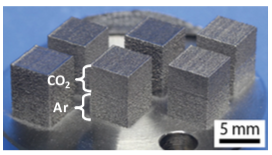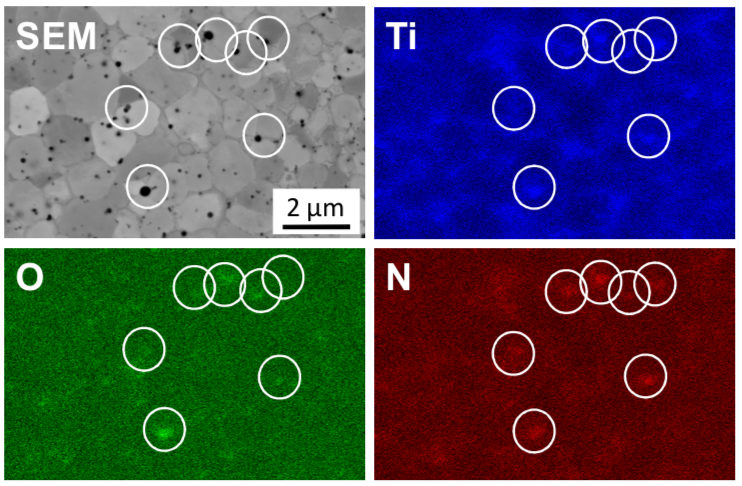Influence of the process gas atmosphere on alloys produced by L-PBF
Usually, the only requirement for the chemistry of the process gas in Laser Additive Manufacturing is a low oxygen content, i.e. a completely inert atmosphere. However, often a low oxygen content remains, leading to oxide inclusions in the produced alloy. In this project, we ask the question if the process atmosphere can be used intentionally to react with the feedstock material to produce materials with improved properties.

In a first line of research, we could show that a deliberately increased oxygen content and a process atmosphere containing CO2 can be used to produce oxide-dispersion strengthened steel. The hot compression strength of a ferritic stainless steel could be increased by ~25% with this extremely simple and cost effective process modification.
Even nitrogen, usually considered to be an inert gas, becomes reactive under laser irradiation. Some materials, such as austenitic stainless steels, only take up a very small amount of nitrogen. This small change in N content can, however, have a significant influence on the austenite stability and thus, via the formation of strain-induced martensite, on the corrosion resistance of the material. If steels containing elements with a high affinity for reaction with nitrogen, e.g. Ti, are processed under N2 gas in L-PBF, mixed oxide and nitride particle formation can be induced.

Oxide and nitride formation (together with Fe2Ti along gain boundaries) in ultrafine grained Fe-10Ti after processing under N2 atmosphere in L-PBF.

